Draw E-r and V-r graphs due to two charged spherical shells as shown in figure (along the line between C and ∝) 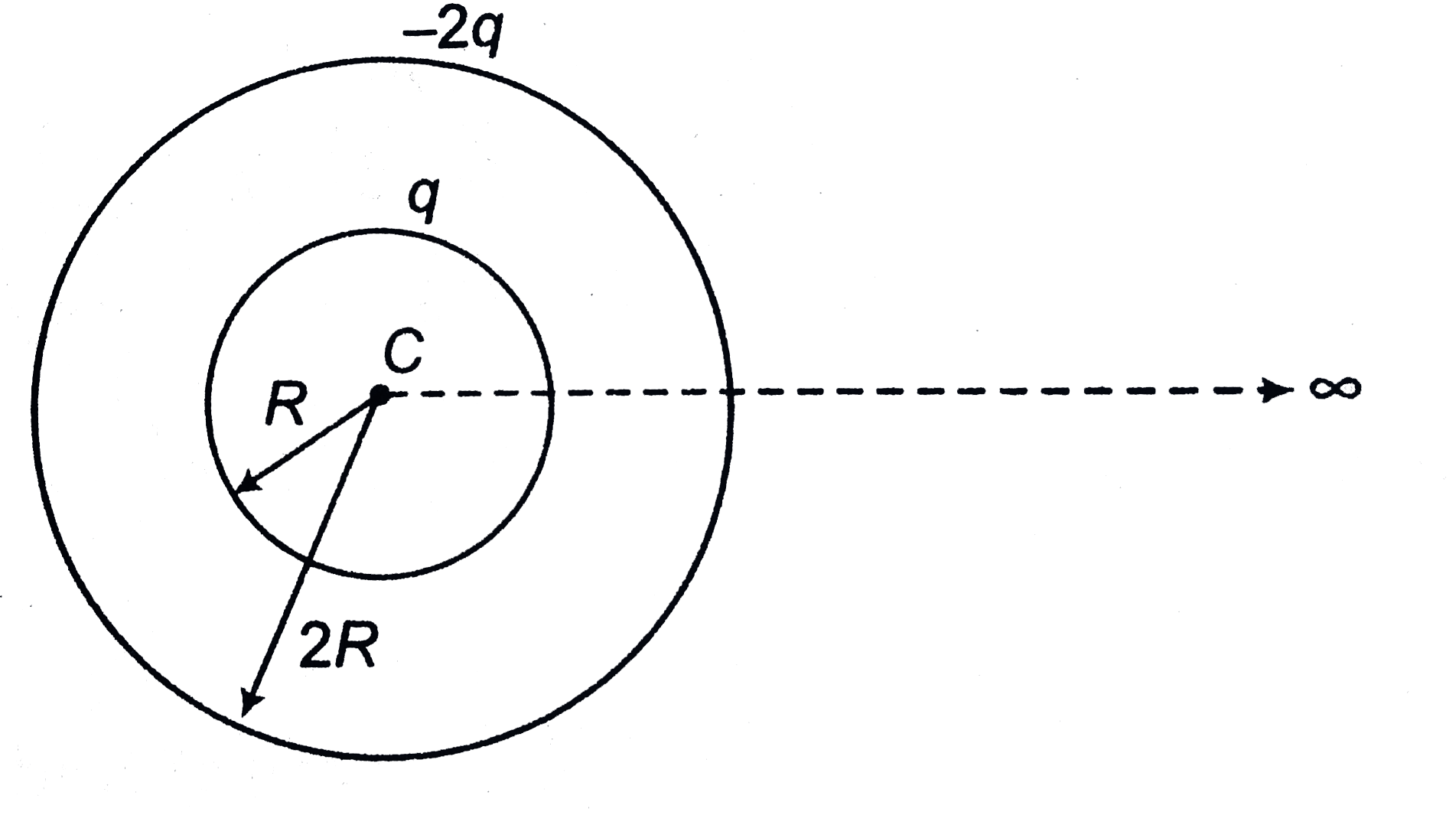
E-r graph 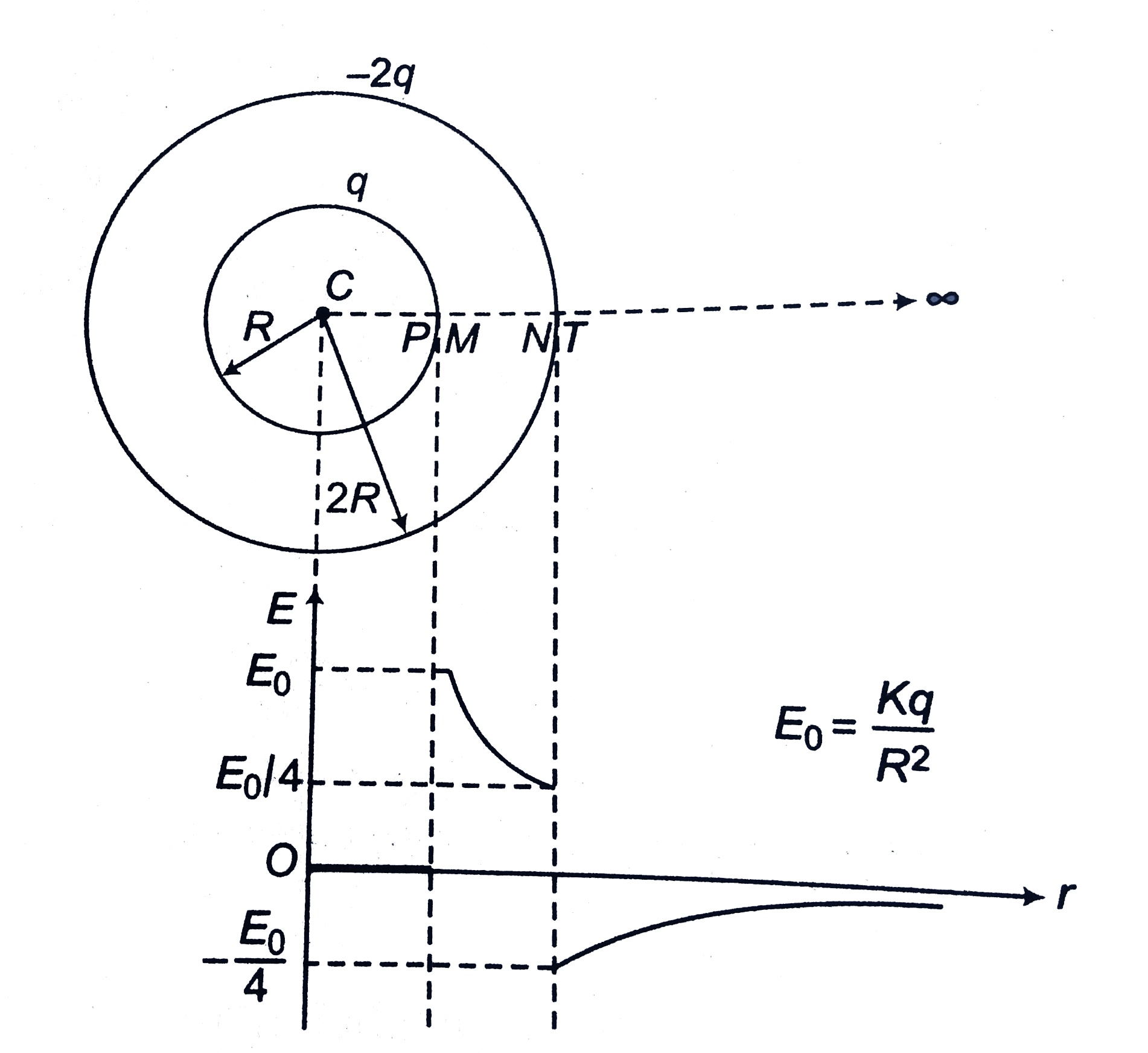
C to P qin=0⇒E=0
At M E=kqR2 (radially outwards, say positive) =E0(say)
At NE=kq(2R)2=kq4R2=E0e (radialy outwards)
From M to N value will decrease from E0 to E04
At TE=k(−2q+q)(2R2)2 (radially inwards)
=−E04
From T to ∞ Value will decrease form E0 to E04
At TE=(k(-2q+q))/((R)^2)(radially∈wards)<br>=-E_0/4<br>FromT→ooValuechan≥som-E_0/4 →zer⊙<br>V−rgraph<br>FromC→PP∮sarely∈g∈s⊥htheshells.Hence,potentialdue→⊥hshellisconstant<br>:. V=(kq)/R-(k(2q))/(2R)=0<br>FromM→Npotentialofqwilldecrease.So,≠tvaluecomesout→be¬ative.AtNorT<br>V=(kq)/(2R)-(k(2q))/(2R)<br>=-(kq)/(2R)=-V_0(say)<br>From→oovaluewillchn≥om-V_0 to zero. The correct graph is a as shown below. 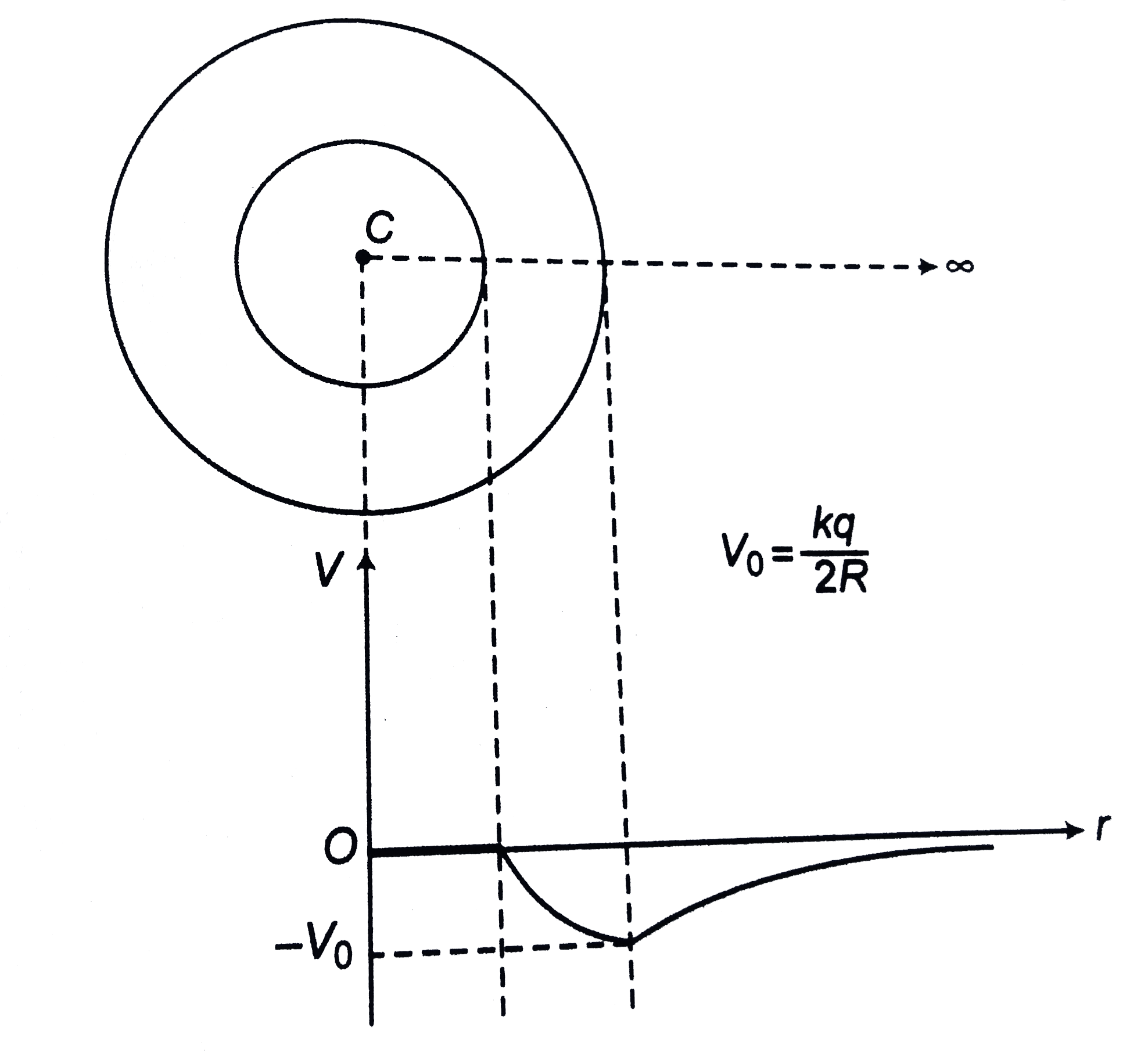
Topper's Solved these Questions
- BOOK - DC PANDEYCHAPTER - ELECTROSTATICSEXERCISE - Exercise 24.14videos
ELECTROSTATICS
- BOOK - DC PANDEYCHAPTER - ELECTROSTATICSEXERCISE - Exercise 24.29videos
ELECTROSTATICS
- BOOK - DC PANDEYCHAPTER - ELECTROSTATICSEXERCISE - Example Type 83videos
ELECTROSTATICS
- BOOK - DC PANDEYCHAPTER - ELECTROSTATIC POTENTIAL AND CAPACITORSEXERCISE - (C) Chapter exercises50videos
ELECTROSTATIC POTENTIAL AND CAPACITORS
- BOOK - DC PANDEYCHAPTER - GRAVITATIONEXERCISE - All Questions120videos
GRAVITATION
Similar Questions
Draw E−r and V−r graphs due to two point charges +q and −2q kept at some along the line joining these two charges.
View SolutionThe point charge is placed outside a spherical shell as shown i the figure. Find the electric potential (in kilo volt) on the surface of shell (Take: q=1μc and R=50cm)
 View Solution
View Solution
Knowledge Check
- Question 1 - Select One
Two concentric spherical sheels are as shown in figure. The V−r graph will be as
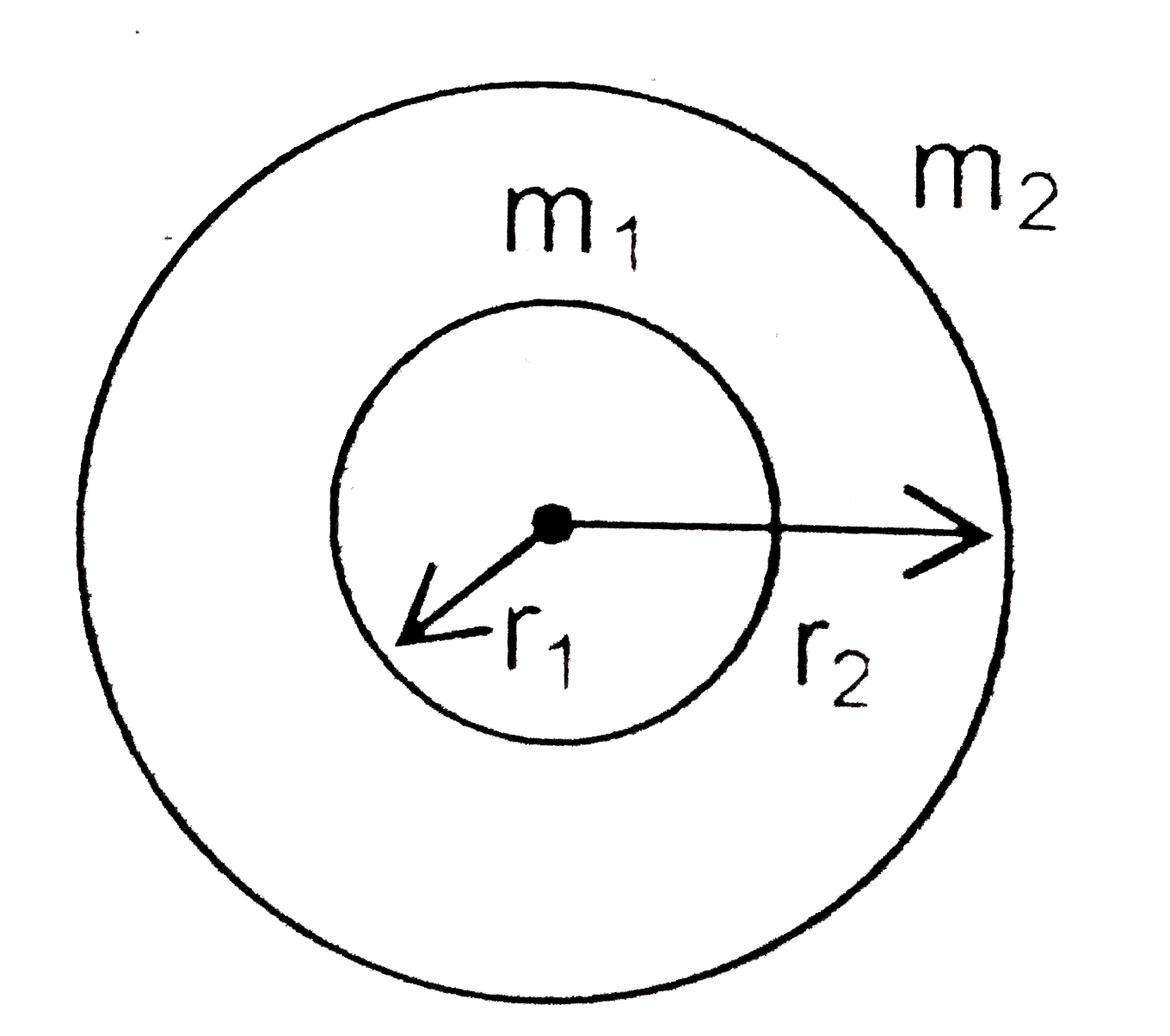 A
A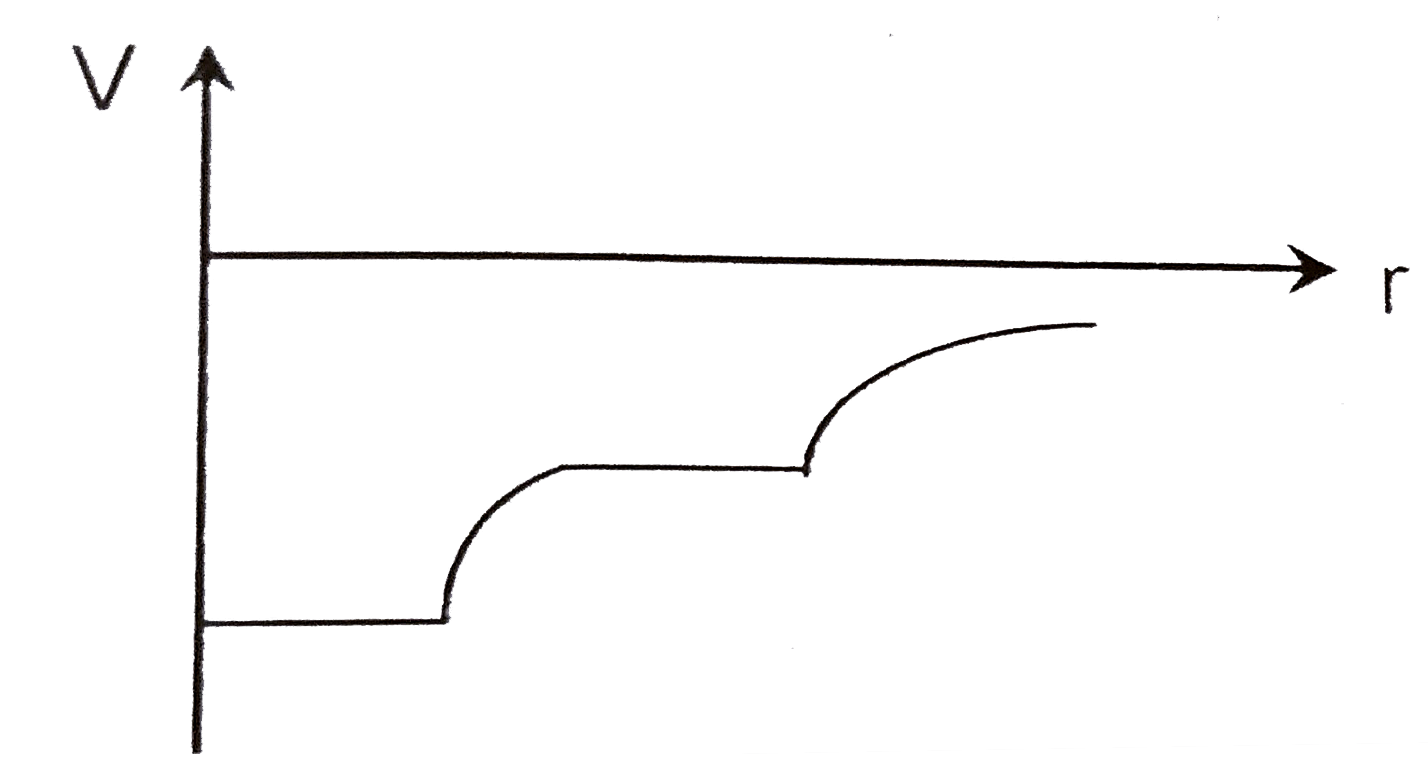 B
B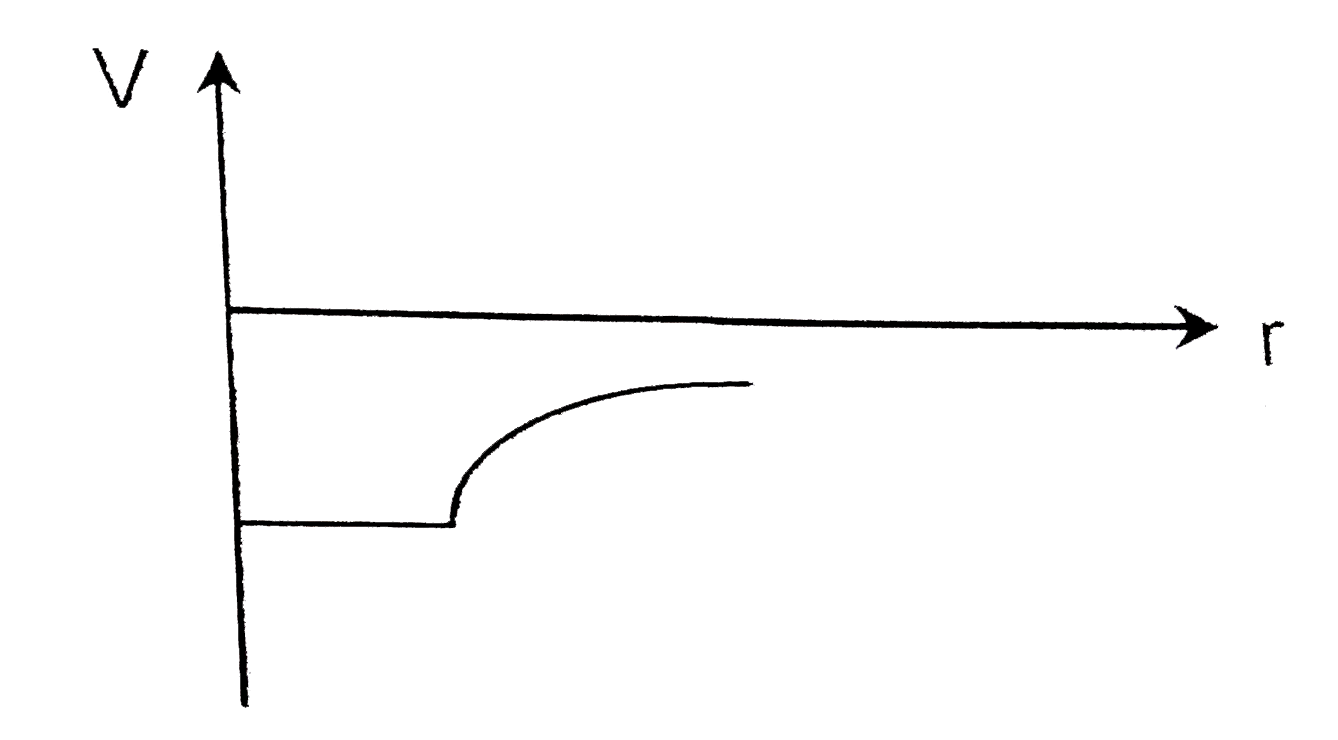 C
C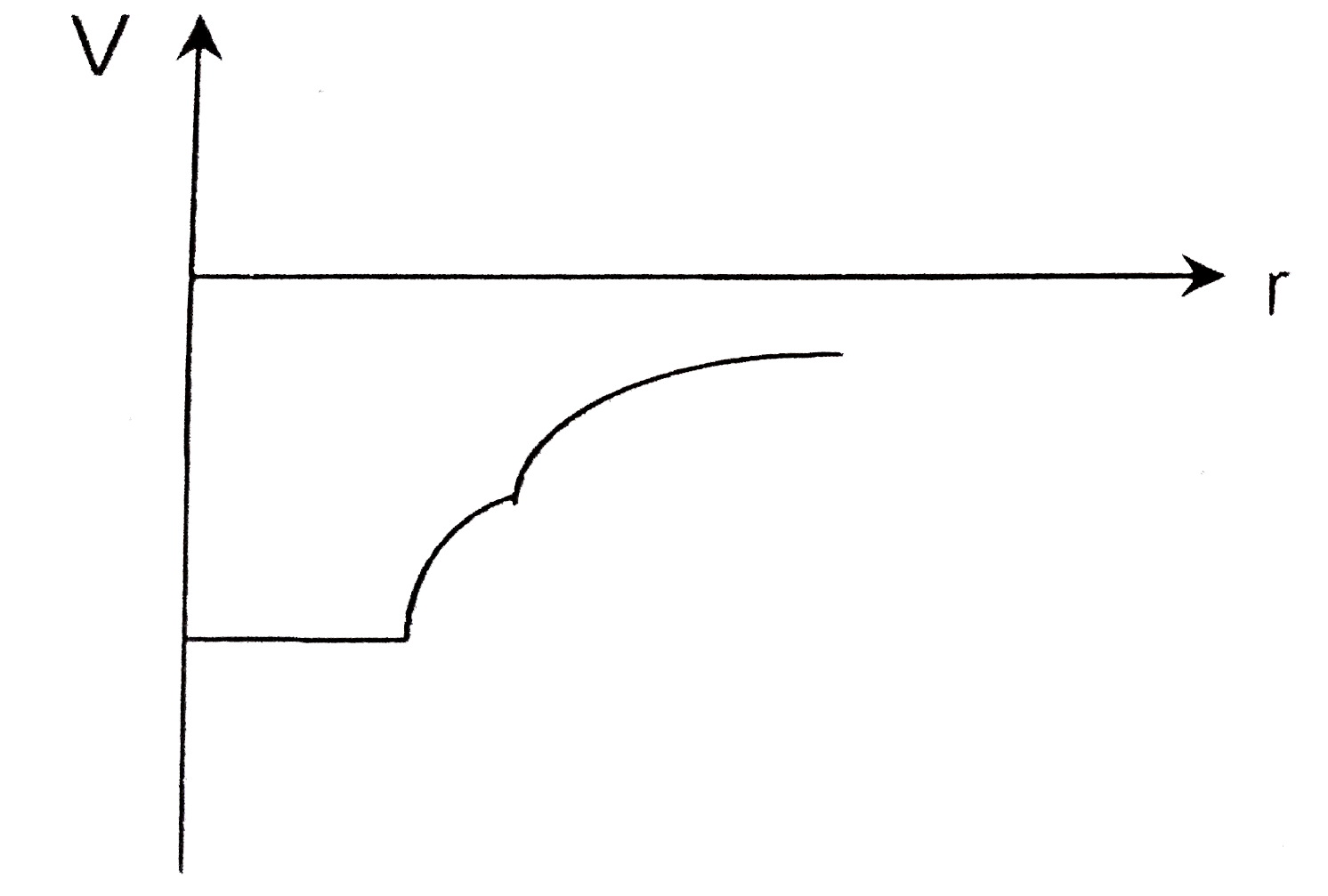 D
D
- Question 2 - Select One
Which of the following graph represents the variation of electric field E due to a thin charged spherical shell of radius R as a function of the distance r from the centre of the shell?
A B
B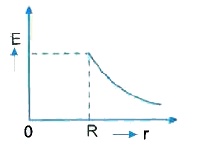 CD
CD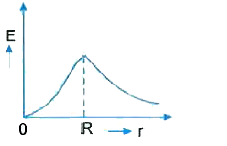
- Question 3 - Select One or More
Two concentric spherical shells have charges +q and −q as shown in figure. Choose the correct options.
 AAt a electric field is zero but electric potentiasl in non zeroBAt B electic feid and electric potential both are non zeroCAt C electric field is Zero but electric potential is non zeroDAt C electrilc fiedl and electric potential both are zero
AAt a electric field is zero but electric potentiasl in non zeroBAt B electic feid and electric potential both are non zeroCAt C electric field is Zero but electric potential is non zeroDAt C electrilc fiedl and electric potential both are zero
How does electric potential vary from point to point due to a thin charged spherical shell ? Draw a graph showing variation of potential with distance.
View SolutionDraw E and V versus r on the same graph for a point charge.
View Solution(a) Use Gauss's law to show that due to a uniformly charged spherical shell of radius R, the electric field at any point situated outside the shell at a distance r from its centre is equal to the electric field at the same point, when the entire charge on the shell were concentrated at its centre. Also plot the graph showing the variation of electric field with r, for r≤R and r≥R. (b) Two point charges of +1μC and +4μC are kept 30 cm apart. How far from the +1μC charge on the line joining the two charges, will the net electric field be zero ?
View SolutionUsing Gauss's law obtain the expression for the electric field due to uniformly charged thin spherical shell of radius R at a point outside the shell. Draw a graph showing the variation of electric tield with r, for r gt R and r lt R.
View SolutionA spherical conductor having charge q and radius r is placed at the centre of a spherical shell of radius R and having charge Q(R>r0. The potential difference between the two is
View Solution

